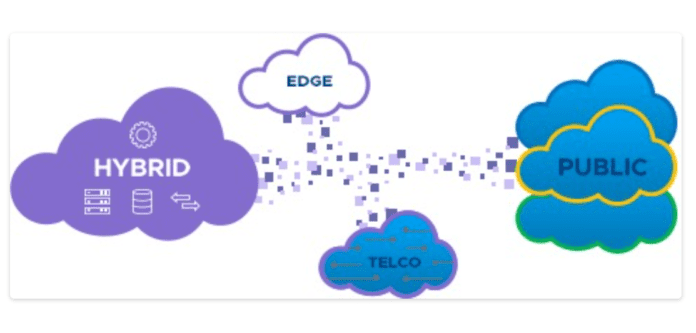IT modernization for 5G key to hybrid, multi-cloud strategy
With the shift to 5G, early investments in network functions virtualization are paving the way to what will ultimately be an IT-centric network that takes advantage of centralized and distributed compute power to support new types of services and billions of new connected devices.
Pervasive cloud computing capable of handling a variety of distributed workloads are needed to move the industry from where it is today to the full vision of network slicing–bespoke data pipes created automatically on demand. This gives users the appropriate connectivity for the necessary application while allowing operators to optimize the allocation of network and spectral resources.
This notion of connecting any device to any cloud to run any application with end-to-end security is a key to VMware’s corporate strategy, Gabriele Di Piazza, vice president of solutions for Telco NFV, told RCR Wireless News in a recent interview.
“If you read through the overall corporate pitch, the corporate strategy from VMware, is really any application, any device, any cloud with intrinsic security,” he said. “This is our corporate, core strategy. If you look at investments we’re making…it’s interesting how this matches well to some of what our customers in telco are doing right now. It is a roadmap of cloudification. You need to be able to program your network.”
A highly-visible piece of telcos working to become more like webscale companies is a move of computing power out to the edge of the network. In the context of 5G, this is necessary to open up latency-sensitive applications like autonomous vehicles or precision robotics–real-time responsiveness requires real-time data processing and that has to be close to the device rather than in a data center somewhere because of that whole pesky speed of light thing.
Discussing how he sees carriers deploying virtualized edge infrastructure, Di Piazza paraphrased: “Will they still be the dumb pipe allowing services to ride on top of the infrastructure? I do think there’s a genuine interest in [operators] owning the edge infrastructure and opening that up for a variety of business models. Maybe the business model is just connectivity. I think the reality is they are starting to see the opportunity to build from there.”
Part and parcel of this emerging dynamic is will carriers use cloudifiation to augment core competencies in connectivity, or is there an opportunity to again take a note from the hyperscale companies and use this virtualized, distributed infrastructure to develop a broader ecosystem of stakeholders to derive more value?
“They try to become a bit in between where they want to have a platform with the ability to offer a new set of use cases. It’s interesting to also observe almost a reverse dynamic where you start to see some of the webscale or large cloud companies potentially enter this space and actually broker relationships between carriers. I think there will be a mix of both.”
In the move to 5G and hybrid, mutli-cloud, what does success look like?
Di Piazza said: “We probably might see a variety of successes and failures. I actually think this is highly dependent on the DNA of a company to transform themselves. Do you have the right skills from a branding perspective, from a marketing perspective, from a sales and support perspective? The economics of leveraging and implementing large scale, webscale, once youo do it, how can I leverage this for more than placing my network functions? Can I evolve to a different business model I think it’s opening up a whole new series of questions.”
For more from this interview, read “The state of telco cloud adoption: The view from VMware (Part 1)” here, and “‘There needs to be an IT DNA’: The view from VMware (Part 2)” here.

